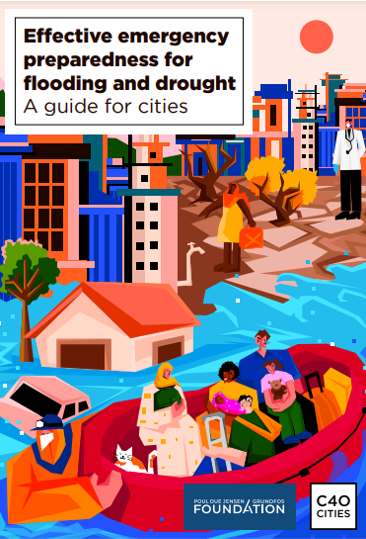Effective emergency preparedness for flooding and drought: A guide for cities

Effective emergency preparedness for flooding and drought: A guide for cities
Implementation Guides – October 2024
DARAJA Case Study, pp. 25-26
Climate-related hazards are growing in intensity and frequency, causing significant loss and damage in cities around the world. Successful emergency preparedness, including the use of early warning systems, is critical to enabling cities and communities to act ahead of extreme events – and thereby to reduce their impact, including climate-related loss and damage.
This guide outlines five key components for effective emergency preparedness. It sets out practical steps that cities can take to help protect vulnerable communities from flooding and drought and shares relevant case studies from cities around the world. At the end of the guide, a self-assessment checklist helps cities to evaluate their current progress and identify areas for improvement and further action.
Cities and the impact of climate disasters
The impact of climate disasters is greatest at the local level, and cities are uniquely placed to lead their own emergency preparedness efforts, in collaboration and coordination with regional and national governments, communities, and the private sector. While adaptation and prevention measures – such as flood barriers, spatial planning, and nature-based solutions – remain essential to reducing the number of people at risk, effective preparedness measures can help lessen the residual risk and prevent hazards from turning into disasters.
It is estimated that investing just US$1 billion per year in early warning systems globally will reduce losses from disasters (including to both income and consumption levels) by US$35 billion per year, as seen in the graphic below:
